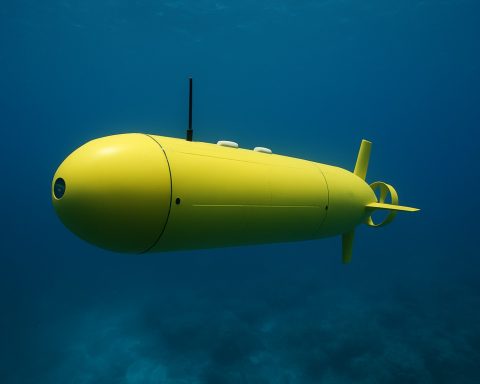- Ford unveils the Transit Custom PHEV and E-Transit Custom, marking a leap in sustainable transport.
- The Hybrid model features a 2.5-liter petrol engine and electric motor, achieving 171kW power, 1.7 liters per 100 km efficiency, and a 54 km electric range.
- The E-Transit Custom electric version offers a 160kW motor with a 64kWh battery, providing a range of 301-307 km and quick-charging from 15-80% in 32 minutes.
- Both models carry over 1080kg and tow up to 2300kg, with a gross mass of over 5225kg.
- Features include a 13-inch infotainment system, adaptive cruise control, panoramic reversing camera, and wireless charging.
- Sport variant adds visually striking trims, LED lighting, dual-zone climate control, and enhanced seating.
- Prices start from $67,590 for the PHEV and $77,590 for the E-Transit, signaling Ford’s commitment to electrification and sustainability.
Rolling into the horizon with the power of the future, Ford unveils its latest strides in sustainable transport with the much-anticipated Transit Custom PHEV and E-Transit Custom. As industrial marvels slated for the third quarter release, these innovative vehicles promise to redefine business on the go, blending efficiency with tradition.
The Hybrid variant equips a refined 2.5-liter petrol engine with an electric motor, yielding 171kW of joint might. This harmonious duo operates at an economical 1.7 liters per 100 kilometers, boasting an electric-only range stretching up to 54km. Meanwhile, the electric E-Transit Custom offers a robust 160kW motor powered by a 64kWh battery, inviting seamless journeys ranging from 301 to 307km per charge. Its quick-charge capability claims a 15-80% zap in just 32 minutes, ensuring minimal downtime. The PHEV’s reliance on AC power at 3.5kW, however, necessitates a more patient wait.
Carrying a payload of over 1080kg and towing up to 2300kg, these Transit Customs remain the workhorses of the road. Their imposing gross mass of more than 5225kg manifests a blend of brawn and brain, designed to tackle both urban landscapes and rugged terrains.
Standard features for the Trend variant enrich practicality with a touch of tech-savvy flair—think a 13-inch infotainment system, intelligent adaptive cruise control, and a panoramic reversing camera. The interiors boast thoughtful conveniences, like smartphone mirroring and wireless charging, paired with sophisticated cloth seating and climate control.
The Sport variant adds an edge of finesse. Visuals are sharpened with striking trims, LED front lighting, and dynamic 17-inch alloys, while comfort is elevated by dual-zone climate management and sport-inspired seating.
Ford leaves no stone unturned, promising future announcements on E-Transit specs to further whet appetites. For now, the excitement builds with prices starting from $67,590 for the PHEV and $77,590 for the E-Transit.
This Transit chapter is one penned with sustainable ink, charting a path not just for the road ahead, but for the air we breathe and the withering planet under our guardianship. The emphasis on electrification signifies a forward-thinking commitment to reducing carbon footprints, driving home the message that the future of transit is as much about innovation as it is about conservation.
Unveiling Ford’s Future of Mobility: Detailed Insights into Transit Custom PHEV and E-Transit Custom
Introduction
Ford’s latest innovations, the Transit Custom PHEV and E-Transit Custom, represent a significant leap in sustainable transportation. These vehicles intertwine modern efficiency with traditional durability, setting new standards for commercial transport. Below, we delve deeper into their features, potential use cases, market trends, and real-world applicability.
Detailed Features and Specifications
Hybrid and Electric Powertrains
– Transit Custom PHEV: This plug-in hybrid electric vehicle (PHEV) combines a 2.5-liter petrol engine with an electric motor, delivering a powerful 171kW. It promises remarkable fuel efficiency with a consumption rate of just 1.7 liters per 100 kilometers and an electric-only range of up to 54km.
– E-Transit Custom: Completely electric, this van features a powerful 160kW motor and a 64kWh battery. It offers a driving range between 301 and 307 kilometers per charge. The quick-charge feature, reaching 15-80% in just 32 minutes, minimizes operational delays, making it ideal for businesses that require minimal downtime.
Practical Capabilities
– Payload and Towing Capacity: With a payload capacity exceeding 1080kg and towing up to 2300kg, these models are designed for heavy-duty tasks. Their comprehensive gross mass of over 5225kg ensures efficiency across various environments from urban to rugged terrains.
Interior and Technology
– Trend Variant: Features a 13-inch infotainment system, intelligent adaptive cruise control, a panoramic reversing camera, and conveniences like smartphone mirroring and wireless charging.
– Sport Variant: Enhances aesthetics with striking trims, LED front lighting, and 17-inch alloy wheels. Inside, it offers dual-zone climate control and sport-inspired seating for added comfort.
Market Trends and Predictions
The automotive market is rapidly shifting towards sustainability, with an increasing preference for hybrid and electric vehicles. As regulatory pressures mount to lower emissions and advance technologies drive down costs, businesses are projected to invest more in electric fleets. Analysts predict a significant rise in the global market share of electric light commercial vehicles, with growth rates estimated between 20-30% annually over the next five years.
Real-World Use Cases
1. Urban Deliveries: The electric-only range of the E-Transit Custom makes it perfect for city-based logistics companies focusing on reducing emissions.
2. Field Services: Businesses conducting operations in remote areas benefit from the robust towing and payload capacities, offering a fusion of sustainability and capability.
3. Contracting and Construction: For contractors requiring reliable transportation with substantial load capacity, these models provide a versatile and environmentally friendly solution.
Pros and Cons Overview
Pros
– Sustainability: Significant reduction in carbon footprint.
– Cost Efficiency: Lower fuel consumption leads to reduced operating costs.
– Advanced Technology: Enhanced safety and convenience features.
– Versatility: Capable of handling diverse operational needs.
Cons
– Initial Cost: Higher initial purchase price compared to traditional diesel vans.
– Charging Infrastructure: Dependence on the availability of charging stations for electric models.
– Long Charging Times for PHEV: AC charging at 3.5kW can be time-consuming.
Actionable Recommendations
1. Consider Lifecycle Costs: Calculate total cost of ownership over the vehicle’s lifespan, factoring in fuel savings and maintenance.
2. Evaluate Charging Options: Assess local infrastructure to support efficient charging strategies.
3. Apply for Incentives: Research and capitalize on any available government incentives for electric vehicles.
4. Monitor Technological Advancements: Stay updated with Ford’s announcements for additional specifications and improvements.
Explore Ford’s innovations and keep abreast of the latest trends in sustainable transportation by visiting their official website: Ford.
By embracing these forward-thinking trends, you can maximize operational efficiency, sustainability, and cost savings, positioning your business at the forefront of the green mobility revolution.









